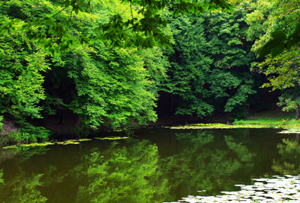
From an ecological point of view, the shore of a lake is defined as the transition zone between the aquatic environment and the terrestrial environment. More practically, however, it is a strip of land that borders lakes and streams and extends inland to a depth of 10 or 15 meters, depending on the case, from the natural high-water mark, that is to say, the line where the vegetation changes from predominance of aquatic plants to a predominance of terrestrial plants.
The ecological balance of lakes and rivers is achieved through the protection of riparian vegetation.
The Shoreline protects against erosion
In general, wave action on lakes and streams tends to erode the shoreline contributing to the increase of sand and mud in the lake.
However, when the shoreline is maintained in its natural state, this erosion from wave action is greatly reduced since the roots of shoreline vegetation form a real barrier retaining the soil in place.
In addition, this shoreline vegetation stops a great deal of sediments from water runoff from reaching the littoral zone of the lake.
It is therefore essential to minimize erosion and runoff of sediments into the lake to maintain the shoreline in its natural state.
The Shoreline protects against overfertilization
Sediments transported by water runoff contain a great deal of fertilizing agents that contribute to the growth of aquatic plants and algae. Thanks to shoreline vegetation, these fertilizing agents are recycled before they can reach the water in the lake.
To minimize overfertilization, shoreline vegetation around lakes and streams needs to be maintained in its natural state.
The shoreline protects against the heating of water in the littoral zone
Shoreline vegetation helps maintain lake water at a relatively cool temperature. This helps prevent the growth of aquatic plants and algae.
The lake’s ecological equilibrium is directly related to the safeguard of shoreline vegetation.
